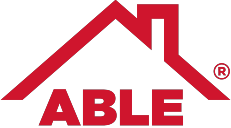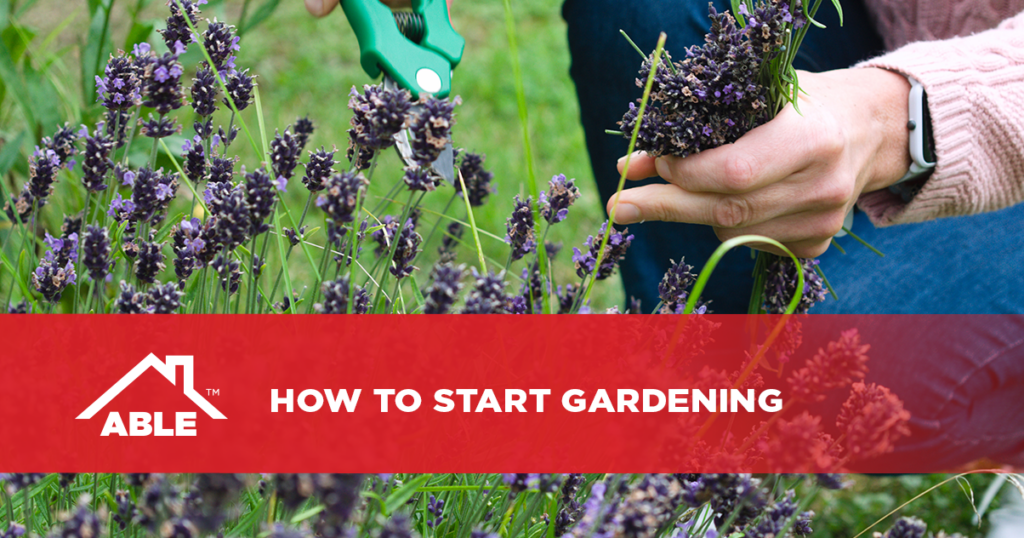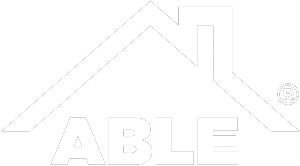Having your very own garden can be one of the best parts about owning your own home. There are many benefits to your health and daily life that come with having and maintaining a home garden. A garden can add natural beauty and aesthetics to your home and be a pleasant sight for you and your neighbors.
With the different varieties of garden plants available, you can have your very own flower bed, a patch of decorative succulents, or even a functioning vegetable garden to provide you with fresh ingredients with which to cook. It can be daunting to begin a brand-new garden, as plants are often temperamental, and it can be difficult to know what you need and what to research beforehand. Here are the tips and tricks for you to make sure that you can develop a green thumb before you begin your very own botanical adventure.
What you need to know before you start
Nothing is more embarrassing than a dead garden, so it is important to know a few things before you start your personal garden. The first thing you need to know before you begin the creation of your home garden is the type of climate that your home is in.
Growing beautiful plants relies heavily on planting the right seeds at the right time. You will need to choose plants for your garden that match your climate zone, whether it be flowers, herbs, vegetable, succulents, etc.
Next, you will need to choose an ideal location for your home garden. Be sure to choose a spot that receives many hours of direct sunlight per day. It is also important to choose a space that is relatively flat and has something to block the brunt of any harsh winds. If you live in an area with frequent bad weather, you can surround your home garden with wood planks to protect your sprouts from being torn up by wind, and you may also want to look into a tarp or other protective canvas to put over your gardens to make sure your plants grow properly.
You will also want to test the pH level of your soil before you plant anything, especially anything you plan on eating. You can request a soil test from your local USDA office, and you should use this to see if your soil is at the required pH level, making the proper adjustments as necessary to fix any pH imbalances in the soil. Be sure to request a soil test that can detect lead or arsenic in the soil. Instructions for these adjustments are provided by the USDA office that supplies the soil test. If you conduct the test and find toxins in the soil, you may have to plant any edible plants you grow in a raised garden bed to avoid getting seriously ill.
You may also want to decide what kind of seeds you want to plant before you begin creating the space for your new green friends. Seed starters take a bit longer to grow and can run into a few more issues than a transplant seedling.
Crafting a garden bed
Preparing a proper garden bed might sound difficult, but the process is typically very simple. First, you will need to clear away any vegetation that may already be growing where you want your garden bed to be. Be sure to pull any weeds up by the roots to ensure they are not choking your plants. Remove any grass, as this can also interfere with your garden plants’ growth.
When you have finished clearing away the old plants, spread a thick layer (about four inches) of compost on the area where you want to start your garden. It is best to lay out the garden beds so that you have adequate space to step between them for maintenance without crushing your own challenging work. You are almost ready to plant!
The tools you need for a home garden
Plants are often very fragile and need extremely specific care to thrive, so it is important to have the right tools at your disposal to make sure that your plants stay healthy. The most basic tools you need for creating and maintaining your own home garden are a decent shovel and a pair of gloves. Other useful tools for keeping your plants thriving include:
- A potting soil scoop for filling pots and planters
- A kitchen knife to make precise cuts when harvesting
- A cordless drill to make drainage holes in planters
- A hori-hori knife (otherwise known as a soil or weeding knife) for dividing clumps of roots
- Hand pruners to cut small stems and branches
- A small pruning saw for pruning trees and shrubs
Often, the more tools at your disposal, the more prepared you can be for any challenge that arises with your home garden.
The best kinds of plants for home gardens
There are thousands of various kinds of plants on this planet. Many can only grow in the wild, and many more are too temperamental for the average homeowner with a green thumb. It is good to know about the best kinds of plants that can thrive in a garden, as well as some information about how to properly care for them.
Herbs
Herbs are one of the fastest and easiest plants to grow in a garden. Herbs are minimal maintenance, as they produce delicious leaves for years and can be planted in even small spaces. They also mature quickly and can be harvested as soon as there are leaves to snip off. There are a wide variety of herbs that you can find in any store that sells garden essentials, so you will be able to find the herbs that you like best.
Greens
Leafy greens, like kale, spinach, or arugula, are also surprisingly simple to maintain. Perfect for salads, these plants mature quickly as well and can be harvested after about 30 days. Although they prefer cool weather, most leafy greens can be successfully grown about anywhere.
Legumes
Legumes are another plant that grow well in home gardens and will grow quickly if maintained properly. Pole beans and peas grown on short vines require a trellis or other structure on which to cling. These will wrap around pretty much anything and grow vigorously. However, it is important to make sure that you guide the legume vines back down into the soil to promote continuous growth. These plants are also weather-friendly and can be grown just about anywhere.
Roots
Root crops include a wide variety of plants that are typically modest maintenance and can grow easily in a home garden. Carrots, beets, yams, sweet potatoes, rutabaga, turnips, horseradish, ginger, onion, shallots, garlic, leeks, parsnips, radishes, Jerusalem artichokes, and more grow well in most weather conditions and can be harvested after only a short amount of time.
Tomatoes are another plant that can grow easily within a home garden. Regular tomatoes often need particular care to grow, but there are options for dwarf tomatoes or cherry tomatoes that can grow easily in small spaces and mature quickly. If you desire your own crop of regular tomatoes, many gardening stores offer special tools for growing tomato plants in your backyard with much less hassle.
Tips for maintaining a beautiful personal garden
There are many general tips available for maintaining a healthy home garden. It is a “fruitful” idea to become familiar with these and other tips before you begin your gardening experience to make sure that you do not encounter the issues that come up when you are a novice gardener:
- Plant seeds carefully at the proper depth described on the seed package, then firmly press the soil down over it, and water it whenever the soil looks dry.
- Be sure to water the proper amount as well. Overwatering can quickly kill most plants. If you are unsure whether it is time to water, stick two fingers deep within the soil near your plants. If it feels dry at all, add more water.
- Use plenty of mulch. Mulch helps suffocate any weeds trying to grow near your plants and keeps the ground soft and moist for your garden plants. Many beneficial bugs are drawn to mulch as well, which can promote the growth of your home garden.
- Remain vigilant. It is important to keep on a proper schedule and always double check your plants to make sure they are growing properly and that you are doing all you can to promote their health.
Having your own garden can be a source of pride and being able to grow and maintain your own crops and even grow your own food can feel empowering. A garden can also make your home look colorful and beautiful. Although maintaining plants can often be a difficult job, there are many ways to make the job easier. Several modern plants and gardening tools are specifically designed to help homeowners be able to plant and maintain their own personal garden.








